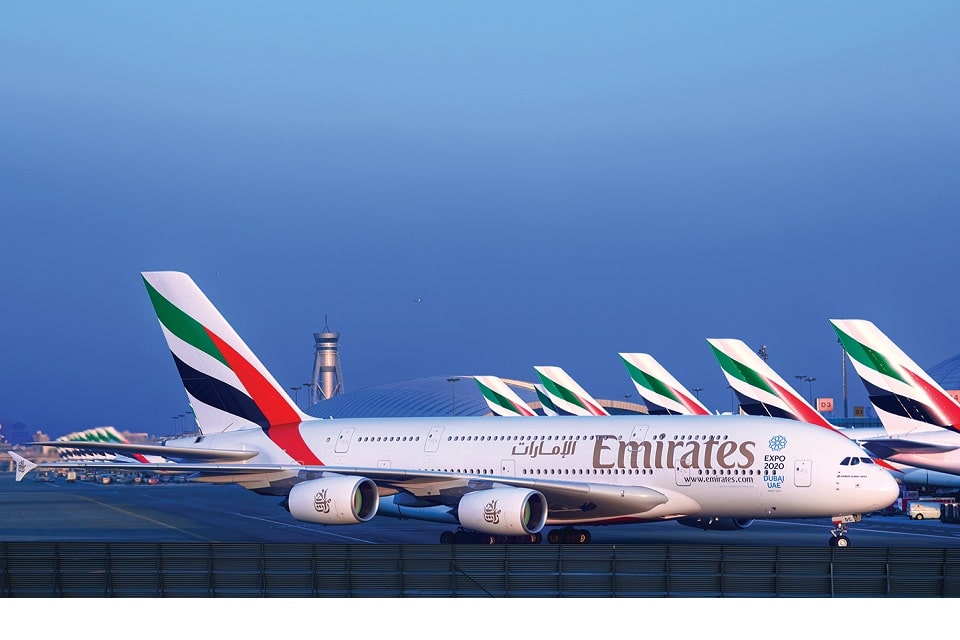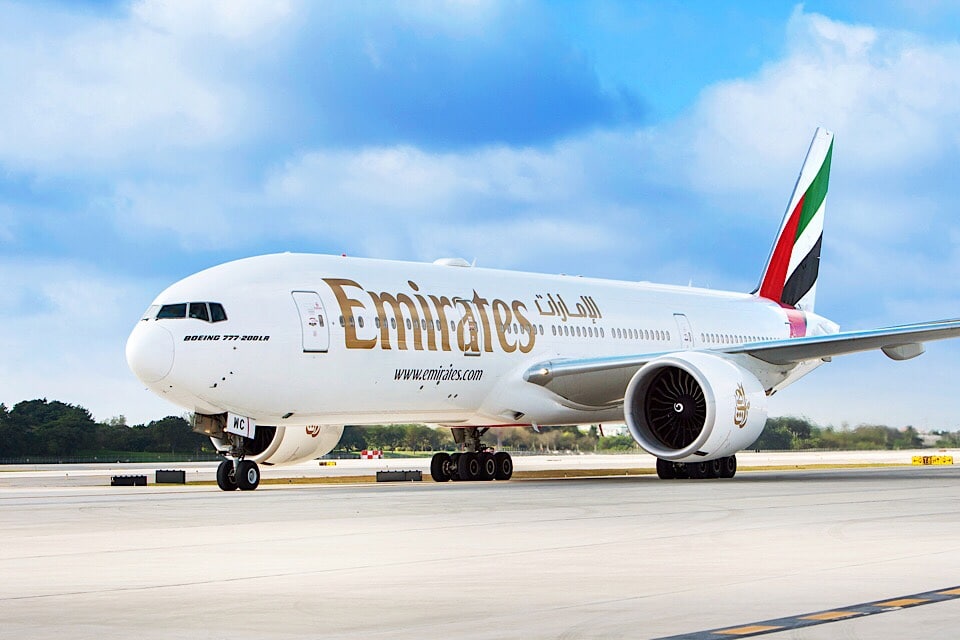Aviation
Emirates reports a profit US$ 631 million for its 2018/19 financial year
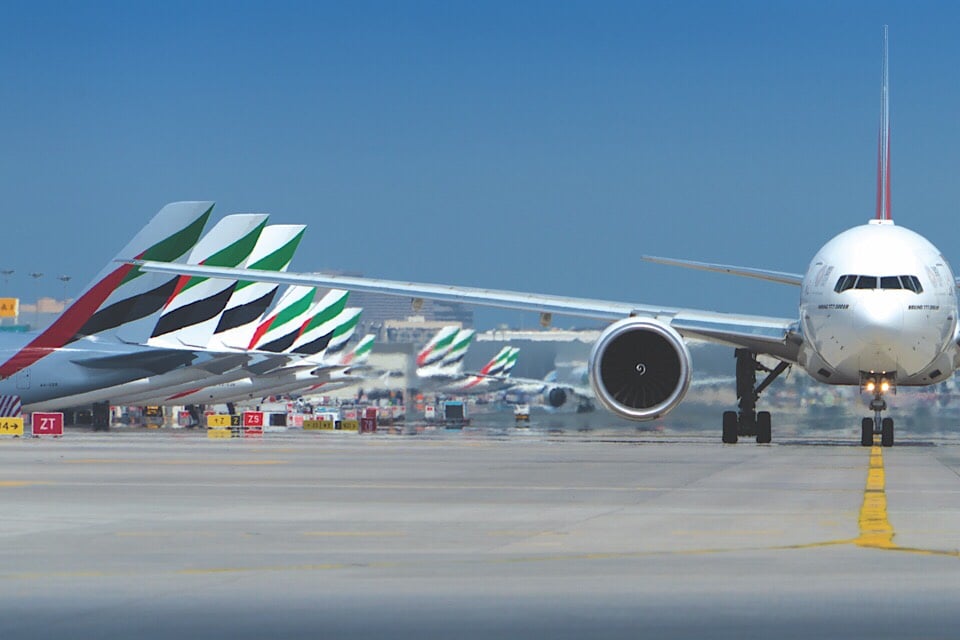
How much did Emirates make in 2019?
Group records 31st consecutive year of profit of AED 2.3 billion (US$ 631 million)
- Strong business growth leading to a record revenue of more than AED 109 billion (US$ 29.8 billion)
- Solid cash balance of AED 22.2 billion (US$ 6.0 billion)
- Declares a dividend of AED 500 million (US$ 136 million) to the Investment Corporation of Dubai.
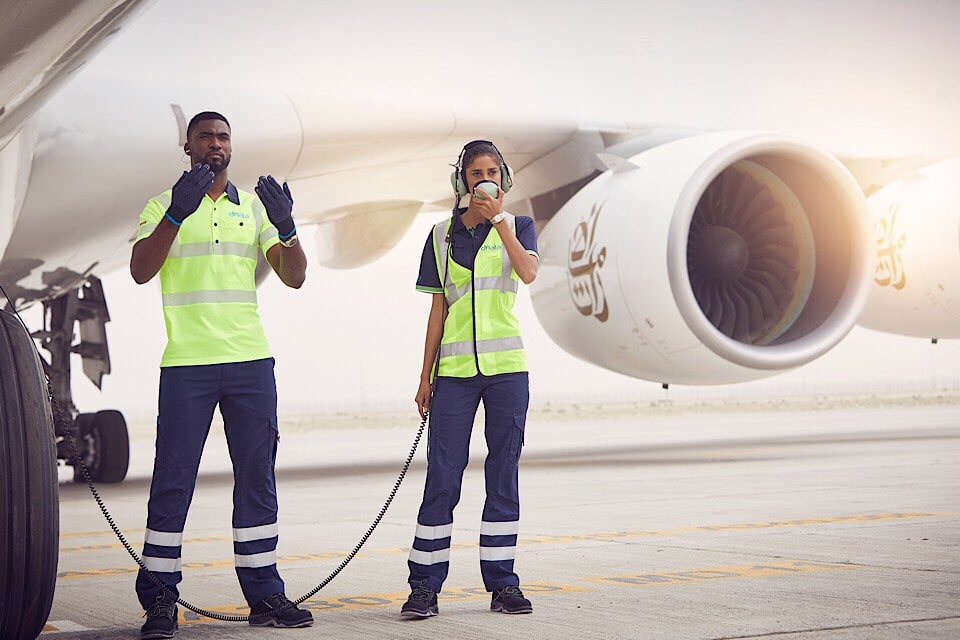
dnata reports its highest ever profit of AED 1.4 billion (US$ 394 million) for its 2018/19 financial year, which includes gain from a one-time sale transaction of its HRG stake. Revenue grew 10% on the back of business growth and acquisitions, with international businesses now accounting for 70% of revenue
Emirates reports a profit of AED 871 million (US$ 237 million), 69% down from the previous year
- Revenue increases by 6% to AED 97.9 billion (US$ 26.7 billion), supported by steady passenger and cargo performance
- Airline capacity crosses 63 billion ATKM with a net addition of 2 new aircraft to the fleet
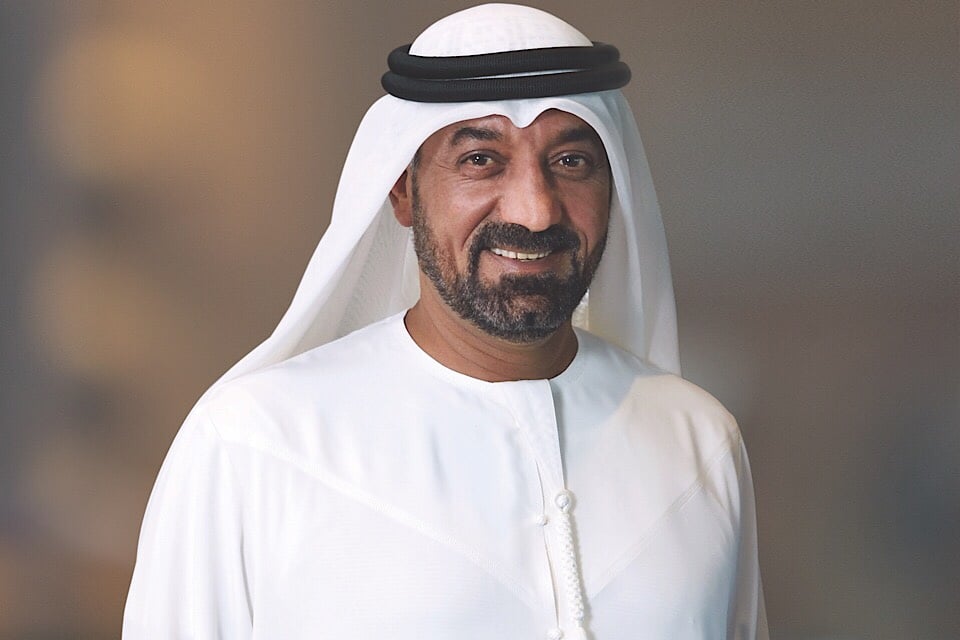
HH Sheikh Ahmed bin Saeed Al Maktoum, Chairman and Chief Executive, Emirates airline and Group, announced Emirates and dnata’s 2018/19 financial performance, including the Group’s 31st consecutive year of profit.
What is the profit of Emirates?
dnata makes record profit of AED 1.4 billion (US$ 394 million), which includes AED 321 million (US$ 88 million) gain from one-time sale of HRG stake
- Revenue increases by 10% to AED 14.4 billion (US$ 3.9 billion), reflecting further business expansion with international business now accounting for 70% of revenue
- Expands global footprint with acquisition of Qantas catering in Australia and 121 Inflight catering business in the Americas, adds new facilities and service capabilities across its airport operations, catering, and travel services divisions
-
How did Emirates create value for customers?
In 2018-19, the Group collectively invested AED 14.6 billion (US$ 3.9 billion) in new aircraft and equipment, the acquisition of companies, modern facilities, the latest technologies, and staff initiatives, a significant increase over last year’s investment spend of AED 9.0 billion (US$ 2.5 billion).
In February, Emirates announced a commitment for 40 A330-900s and 30 A350-900s worth US$ 21.4 billion at list prices in an agreement signed with Airbus, to be delivered from 2021 and 2024 respectively. The airline will also receive 14 more A380 deliveries from 2019 until the end of 2021, taking its total A380 order book to 123 units.
dnata’s key investments during the year included: the acquisitions of Q Catering and Snap Fresh in Australia, and 121 Inflight Catering in the US; the buy-out of shares to become the owner of Dubai Express, Freightworks LLC; and a 51% majority stakeholder of Bolloré Logistics LLC, UAE; the build of new cargo and pharma handling facilities in Belgium, the US, the UK, the Netherlands, Australia, Singapore and Pakistan; the acquisition of German tour operator Tropo, and a majority stake in BD4travel, a company providing artificial intelligence driven IT solutions in the travel sector.
Across its more than 120 subsidiaries, the Group’s total workforceincreased by 2% to 105,286, representing over 160 different nationalities, mainly influenced by dnata’s new acquisitions and its international business expansion.
Emirates’ total passenger and cargo capacity crossed the 63 billion mark, to 63.3 billion ATKMs at the end of 2018-19, cementing its position as the world’s largest international carrier. The airline moderately increased capacity during the year over 2017-18 by 3%, with a focus on yield improvement.
Emirates received 13 new aircraft during the financial year, comprising of seven A380s and six Boeing 777-300ERs, including the last 777-300ER on its order book. The next 777 delivery is planned for 2020, when Emirates receives its first 777X aircraft.
During 2018-19, Emirates phased out 11 older aircraft, bringing its total fleet count to 270 at the end of March. This fleet roll-over involving 24 aircraft was again one of the largest managed in a year, keeping Emirates’ average fleet age at a youthful 6.1 years.
It reinforces Emirates’ strategy to operate a young and modern fleet, and live up to its “Fly Better” brand promise as modern aircraft are better for the environment, better for operations, and better for customers.
During the year, Emirates launched three new passenger destinations: London Stansted (UK), Santiago (Chile) and Edinburgh (Scotland), and reinstated services to Sabiha Gokcen (Turkey). It also added flight capacity to 14 existing destinations and upgraded capacity to six cities, offering customers more choice of flight timings and onward connections
The full 2018-19 Annual Report of the Emirates Group – comprising Emirates, dnata and their subsidiaries – is available at:https://www.emirates.com/

Aviation
Air India’s B747 Makes Its Final Journey, Waving Farewell to Fans

In a poignant moment marking the end of an era in aviation history, Air India’s iconic Boeing 747 aircraft, affectionately known as the ‘Queen of the Skies,’ embarked on its ultimate journey from Mumbai’s international airport.
The departure, bound for Plainfield, USA, where it will undergo dismantling and part-stripping under the ownership of American AerSale, signals the closure of a storied chapter for the airline.
Once revered for transporting dignitaries ranging from prime ministers to presidents, the Boeing 747 has etched itself into aviation lore. Yet, as airlines worldwide pivot towards more contemporary and cost-effective aircraft, Air India’s decision to bid farewell to its remaining Boeing 747s reflects the pragmatic realities of today’s aviation landscape.
The sale of these majestic planes to AerSale represents a strategic move by Tata Group, Air India’s new custodian, towards optimizing operational efficiency and embracing modern industry standards. Out of the four aircraft sold, two will be repurposed into freighters, while the remaining pair will be meticulously disassembled to salvage valuable components.
The final flight from Mumbai witnessed a touching tribute as pilots performed a traditional ‘Wing Wave,’ symbolizing the conclusion of the Boeing 747‘s distinguished service with Air India. This poignant gesture encapsulates the deep sentiment attached to the aircraft’s departure and its significant contribution to the airline’s legacy.
As the Boeing 747 embarks on its journey to Plainfield, USA, nostalgia permeates the air, evoking memories of its maiden flight on March 22, 1971. Over five decades, Air India operated a total of 25 Boeing 747s, each leaving an indelible mark on the annals of aviation history.
Middle East
British Airways Resumes Daily Flights to Abu Dhabi, After 4-Year hiatus
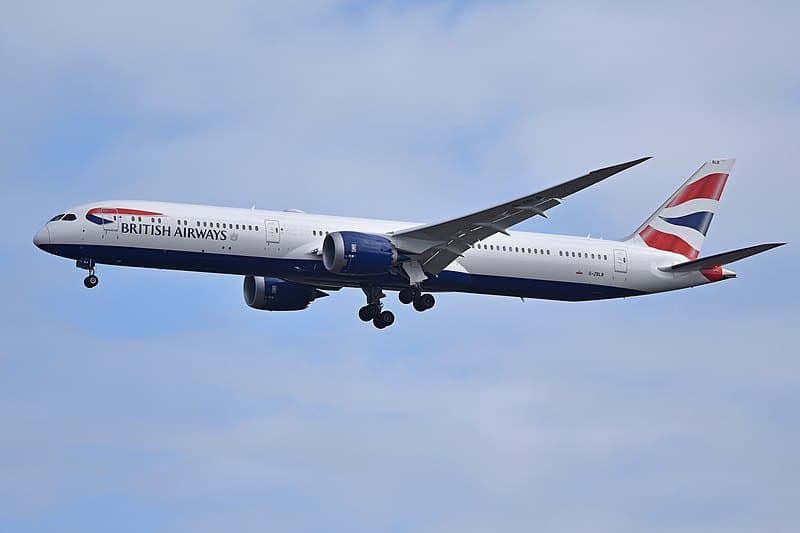
British Airways made its way back to Abu Dhabi, landing at Zayed International Airport. Following a four-year break in service, both crew and passengers were greeted with enthusiasm.
In the summer of 2024, British Airways plans to launch a daily route, utilising a Boeing 787-9, from London Heathrow to Abu Dhabi. The new route enhances ties between the UAE and the UK and expands vast worldwide network, catering to passengers who may be visiting friends and family or travelling for business.
Arriving in Abu Dhabi at 08.30+1, flight BA073 to Abu Dhabi leaves London Heathrow at 22.25. Departing at 10.10 and landing at London Heathrow at 15.20 is the inbound flight (BA072).
The chief executive officer and managing director of Abu Dhabi Airports, Elena Sorlini, stated: “We are delighted to welcome British Airways to Zayed International Airport. Their daily schedule is expected to improve connectivity and stimulate travel and business.” Visitors may experience the dynamic capital of the United Arab Emirates like never before at our brand-new, award-winning, state-of-the-art terminal, where they will be welcomed with the best kind of Emirati hospitality.”
Flight schedule:
| London Heathrow (LHR) to Zayed International (AUH)All times are local | ||||||
| Season | Flight number | Departing LHR | Arriving AUH | Flight number | Departing AUH | Arriving LHR |
| Summer ‘24 | BA73 | 22:25 | 08:30+1 | BA72 | 10:10 | 15:20 |
| Winter ‘24 | BA73 | 22:25 | 09:30+1 | BA72 | 11:10 | 15:20 |
Aviation
FAA investigation: Passenger seated in Captain’s seat inside cockpit at cruising altitude
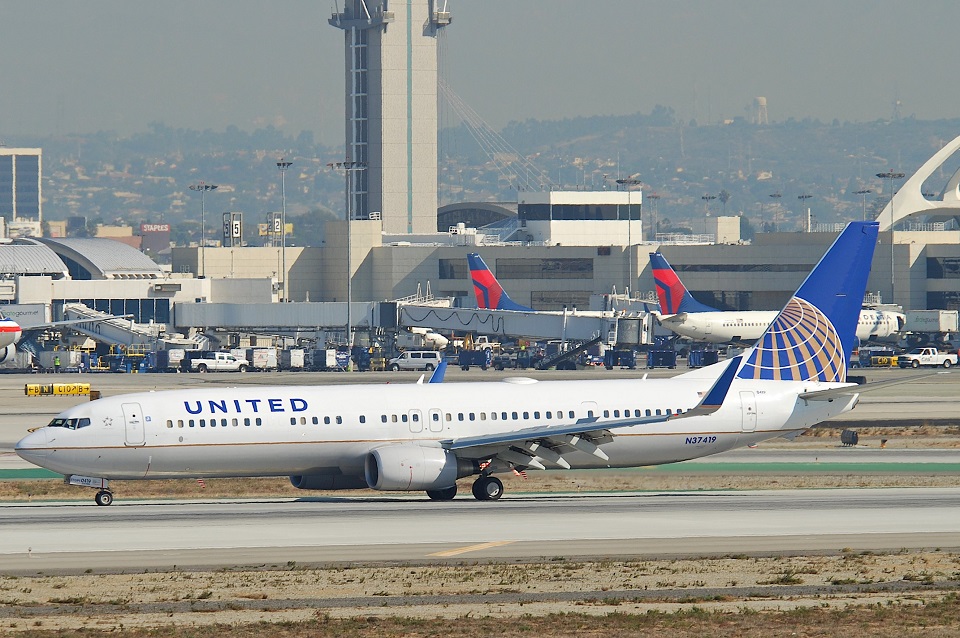
A viral video capturing a startling moment aboard a United Airlines charter flight from Denver to Toronto has triggered a federal investigation.
The footage, initially shared on social media by Hensley Meulens, the hitting coach for the Colorado Rockies baseball team, depicts a member of the coaching staff seated in one of the pilot seats while the aircraft was in mid-flight.
In his caption, Meulens expressed gratitude to the captain and first officer for allowing him this unusual experience. The video, filmed by another passenger, reveals the cockpit door open, and at one point, a third passenger briefly enters the flight deck. Alarmingly, during this time, the captain was absent from the cockpit.
Despite the flight being a private charter operated by United Airlines, company and Federal Aviation Administration (FAA) regulations strictly prohibit passengers from entering the cockpit during flight or leaving the flight deck unsecured.
United Airlines swiftly responded, expressing deep concern over the incident. A spokesperson emphasized that the video depicted an unauthorized person in the flight deck at cruising altitude with the autopilot engaged, constituting a clear violation of safety and operational policies.
The FAA confirmed that it is actively investigating the incident, highlighting that unauthorized access to the flight deck during flight is a violation of federal regulations. The agency assured that it is taking the matter seriously and will conduct a thorough examination to ensure compliance with aviation safety standards.

